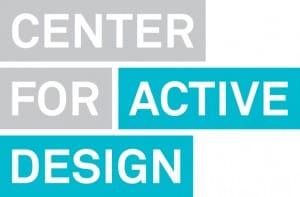Top Story
Planning and Public Health: creating healthier communities through integrative practice
Planning and Public Health presentation slides
Planning and Public Health audio
On Thursday, June 20, 2013, the ULI Rose Center for Public Leadership, in partnership with the Center for Active Design, hosted a webinar presentation about how planners in Hennepin County, Minnesota, and Nashville, Tennessee, are drafting policies that integrate public health considerations with land use decisions. Mounting scientific evidence supports a causal relationship between the impacts of design, development patterns, and transportation on community health outcomes. These findings are impelling public action—such as in Hennepin County and Nashville—to integrate health and well-being into the development process.
Suzanne Nienaber, Partnerships Director of the Center for Active Design, began by introducing “active design.” She said, “Active design is about designing our communities to make the healthy choice, the easy choice.” Nienaber went on to discuss the history of health’s relationship to the built environment. She noted design’s contributions to the reduction of infectious diseases and posited ways design can help with today’s health crises, in particular the growing obesity rate.
Karen R. Nikolai of the Housing, Community Works, and Transit Department of Hennepin County, Minnesota, then outlined the various partnerships built and steps her county has taken to foster and to promote active living. The county formally adopted Active Living Policies in 2009 and is continuing to make progress on their pedestrian and bicycle planning. The county also conducted a health impact assessment of the Bottineau Transitway and made a number of recommendations regarding community engagement, transitway development, and station-area planning.
Finally, Mary Beth Ikard, Communications Director of Nashville Area Metropolitan Planning Organization (MPO), explained how her organization functions, highlighted a number of its accomplishments, and noted areas that needed to be addressed in her community, especially the increasing costs associated with worsening health. She then focused on the role transportation plays in public health and presented strategies for improving mass transit in Middle Tennessee, which are part of a bold transit plan currently taking shape in the area.
Click the links above to view the webinar’s slides and to listen to the presentation’s audio recording, and be sure to stay tuned for upcoming webinars and other ULI events.
Center for Active Design:
Organized in response to a growing international health crisis, the Center for Active Design seeks to reduce obesity and chronic diseases by promoting physical activity and healthy eating through the design of buildings, streets, and neighborhoods. The center grew out of an interdisciplinary partnership among New York City agencies, the New York City chapter of the American Institute of Architects, private sector architects and developers, and academic partners. This group collaborated to develop the Active Design Guidelines, published in 2010. Following the widespread success of the guidelines, the Center for Active Design was established to foster implementation of active-design strategies among design, planning, policy, and real estate professionals.
